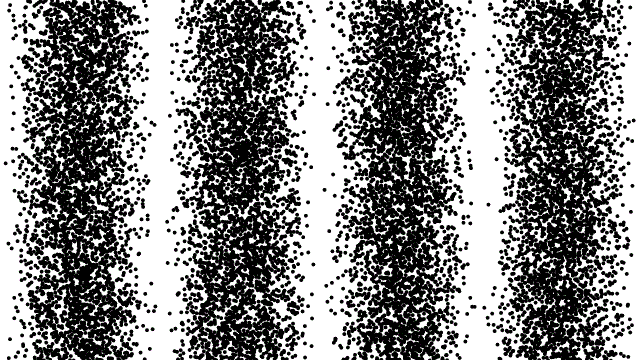Dynamics
Ambience / Attunement / Chōra / Kairos
![McBride, T. L. (2014). Powerlines [Photo]. Gainesville, FL.](images/pic06.jpg)
Think of ambience as analogous to general relativity, wherein gravity is no longer the force it was in classical mechanics but a term designating the dynamic relationship between spacetime and matter in motion. In this analogy, an ambient rhetoric is kind of like gravity: “an ensemble of variables, forces, and elements that shape things," but unlike gravity, "in ways difficult to quantify or specify” (Rickert, 2013, p. 7).
Attunement to ambience as a theory of rhetoric brings the big picture into focus, illuminating how ecologies (and ecologies of ecologies) operate. However, if we try attuning to rhetoric as ambient on the microcosmic level of the act, we may suffer under the conditions of the uncertainty principle. We have a hard time measuring particles because there are no particles, only waves that behave like particles. A theory of rhetoric as ambient doesn't deny the merits of measuring particles but reminds us not to do so at the expense of an awareness of the wave.

That’s where the chōra comes into play as a key concept in Thomas Rickert's (2013) re-theorization (and in some respects, re-historicization) of rhetorical invention. Rickert explained how the term chōra historically referred to the dance floor and the dancer and the dancing; the polis and its outer perimeter mapped out by the travels of the demos to and from festivals in the surrounding hills and fields; terrain shaping movement and movement shaping terrain to give rise to itself. This particle/wave duality of the chōra, Rickert pointed out, is what frustrated and intrigued Plato. It doesn’t break down into component parts, but at the same time Plato recognized that the dynamic it represents is necessary to making his republic more than an inert set of discrete ideas. "What the chōra allows us to do," Rickert contended, "is practice and theorize how this seeming inconsistency or paradox is actually productive. It is part of what enables or gives rise to rhetoric, but it also withdraws, which in turn necessitates nothing more than another beginning, another inventio" (p. 73).
At the pre-/sub-rational level of the chōra, mind is inherently wavelike and immanent. The rational, analytical mind—which parses out reality into discrete particulars, and to which we have constrained our theories of rhetoric by relegating them to conscious decision-making processes—belies the manner in which cognition and agency are ecologically distributed at the level of the chōra, invention, affect, mood—as much a state of being as a description of the time, place, movement, and energy of being.
Rickert identified the moment of attunement to—or emergence from—the chōra as kairos, which he argued could be understood and even taught as an attunement to the complex material and affective ecologies through which we compose our being in the world: "Kairos is not about mastery but instead concerns attunement to a situation, with attunement understood not as a subjective state of mind or willed comportment but as an ambient catalysis within what is most material and concrete, a gathering that springs forward" (Rickert, 2013, p. 98). In Ambient Rhetoric, Rickert set out to map the heretofore ineffable territory of invention as attunement to our ecological embeddedness, or dwelling, which he argued we cannot understand or achieve through recourse to naÏve realism or linguistic idealism.
![McBride, T. L. (2014). Powerlines [Photo]. Gainesville, FL.](images/pic10.jpg)
![McBride, T. L. (2014). Powerlines [Photo]. Gainesville, FL.](images/pic11.jpg)
